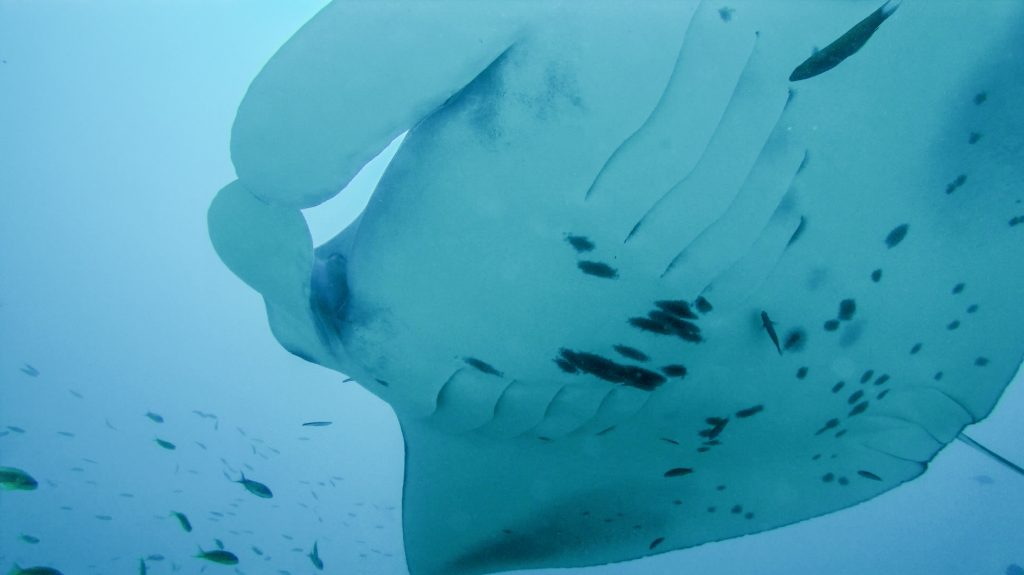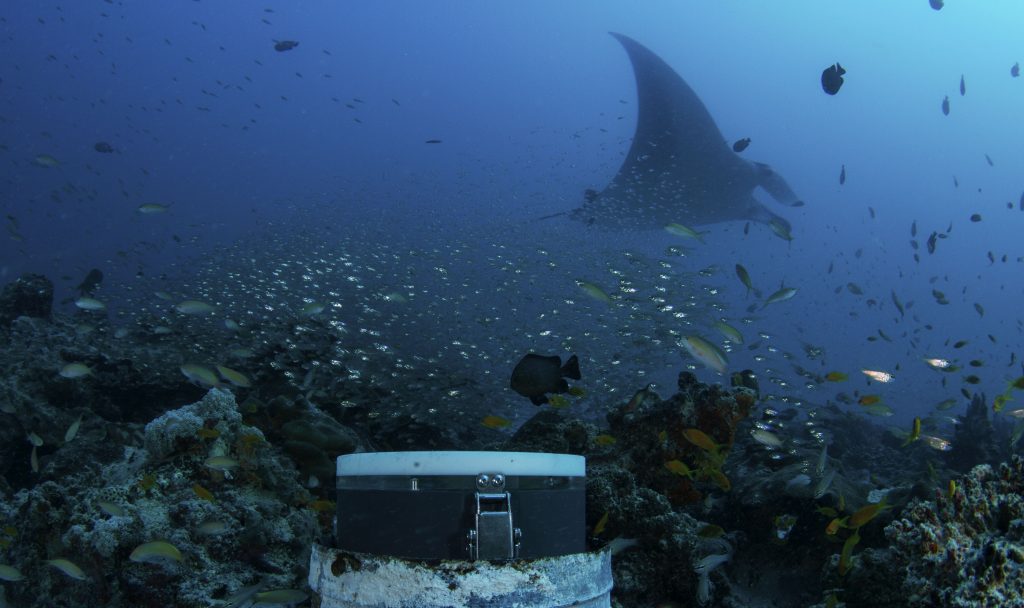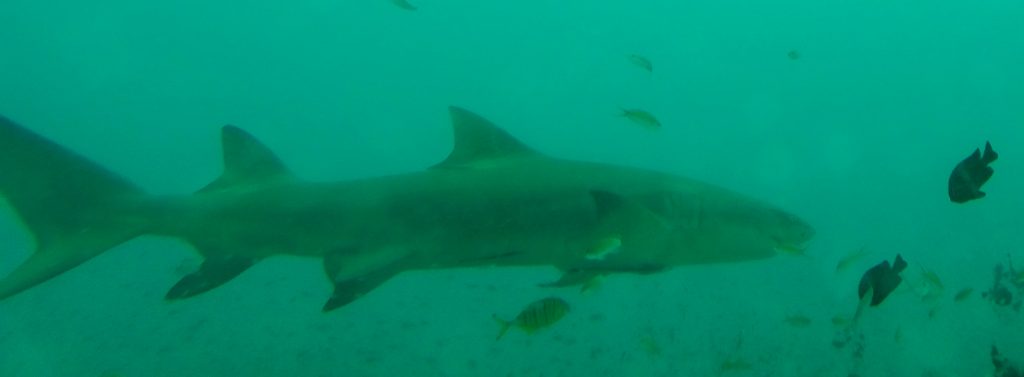Our Secret Weapon: MantaCam
Arriving on D’Arros Island to start my time as research assistant I was aware of the general outline to the specific research projects I would be involved in, Manta Rays, was one of those. Since 2012, D’Arros Research Centre has used photo identification to build a database of individual reef manta rays (Mobula alfredi) that visit the island, either for feeding or cleaning. Currently, Save Our Seas Foundation Project Leader Lauren Peel is conducting her PhD project on reef manta rays in Seychelles, expanding on the previous work done by the Save Our Seas Foundation team here.

The long-term monitoring of reef manta rays at D'Arros Research Centre relies on photographing the underside of a manta to capture its individual markings, as unique as a fingerprint. MantaCam is our secret weapon to capture images without even being in the water. © Photo by MantaCam | Save Our Seas Foundation
Contributing to the manta identification data and visitation data, particularly on the house reef, a cleaning station located 200 m from the research centre, is a large part of what I do here on D’Arros, but maybe not how you’d think.
Arriving on D’Arros Island to start my time as research assistant I was aware of the general outline to the specific research projects I would be involved in, Manta Rays, was one of those. Since 2012, D’Arros Research Centre has used photo identification to build a database of individual reef manta rays (Mobula alfredi) that visit the island, either for feeding or cleaning. Currently, Save Our Seas Foundation Project Leader Lauren Peel is conducting her PhD project on reef manta rays in Seychelles, expanding on the previous work done by the Save Our Seas Foundation team here.
The traditional method to gather these data would be on SCUBA, which is limiting. A SCUBA diver could realistically survey for only about 45 minutes at a time. Conducting more than two manta research dives a day at D’Arros Research Centre would be challenging, in my role as research assistant, I also have to find time to gather data on shearwaters, juvenile sharks, turtles and humphead wrasse, to name a few.
How could we be more efficient with the collection of manta ray identification and visitation data on a known reef without diving it every day? The goal was set – create and implement a method that could gather large amounts of data reliably while minimising research labour hours. After some head banging, routing through equipment drawers and old tool houses our ideas came together.
In swoops our secret weapon, the MantaCam.

A reef manta ray swims past the first deployment of MantaCam on the manta cleaning station located 200 m off the D’Arros Research Centre. This camera setup helps to capture the unique pattern underneath each manta ray which helps to identify individuals. © Photo by Luke Gordon | Save Our Seas Foundation
Pairing state-of-the art technology with DIY modifications, we rigged up a GoPro camera with extra batteries contained within a water tight unit anchored next to the manta cleaning station. As a prototype, it’s maybe not the most aesthetically pleasing piece of research equipment but for manta ray idenfication, it may well prove to be invaluable.
The idea of remote cameras in wildlife research is most definitely not new, however, to study manta rays, it is a novel methodology. With any new methodology there is a teething period, for us the initial questions were quite large: would the MantaCam system capture any mantas, and if so which angle would we place the camera? Would we use a 30 sec or 10 sec image interval? Video or stills? GoPro 3 or 4…?
Eventually we established the right blend of angles and intervals. Right now MantaCam is capturing images – one image every 10 seconds during daylight hours, six in the morning through to six in the evening, every day – a staggering 4,400 images. With two camera systems on rotation we run MantaCam 12-hours a day, 7-days a week cutting the diving requirement down to every other day for a camera change.
4,400 images to sift through daily? Sounds a lot, but surprisingly this takes very little time. I should know, it’s me going through them – anytime spent sifting is made more interesting by the anticipation of what the next frame may capture; a photo bombing Napoleon wrasse, five species of shark, hawksbill turtles, eagle rays and some very territorial damselfish have all made guest appearances.

An image taken by MantaCam off D'Arros Island. A lemon shark, rarely see on scuba dives, passes by the manta cleaning station. © Photo by MantaCam | Save Our Seas Foundation
After our first five deployments, we have gathered over 200 images of mantas, 28 positive identifications and one confirmed new individual to the database. To give some context, this would have taken us 122+ 45 minute dives on the manta cleaning station reef to achieve! It’s a very promising start considering we have not yet entered the manta season here at D’Arros.
Despite some small challenges still, manta cam can deliver a quantity of data that would otherwise be unattainable.
